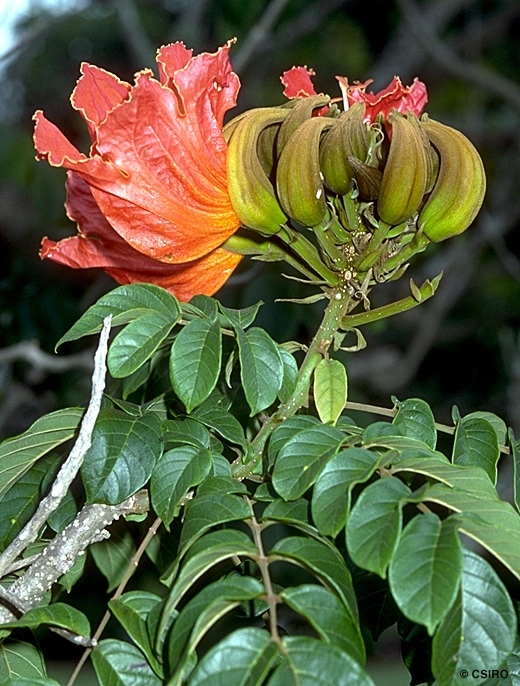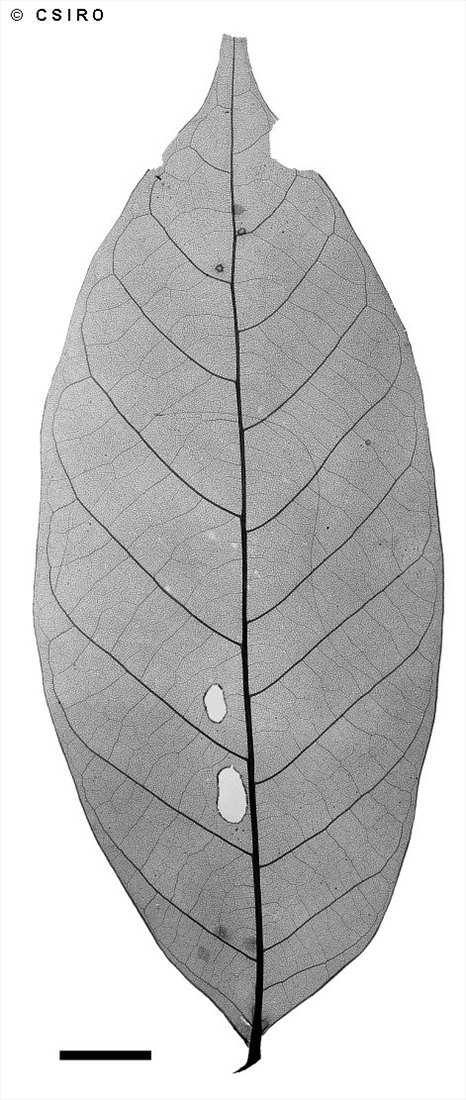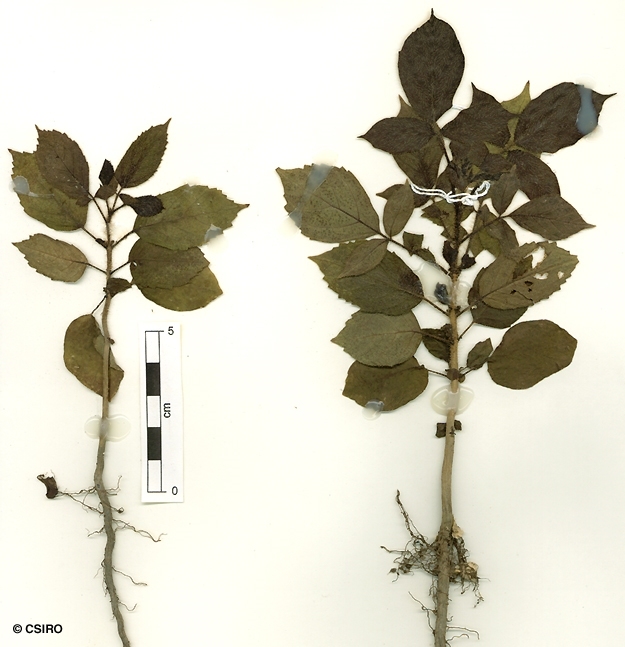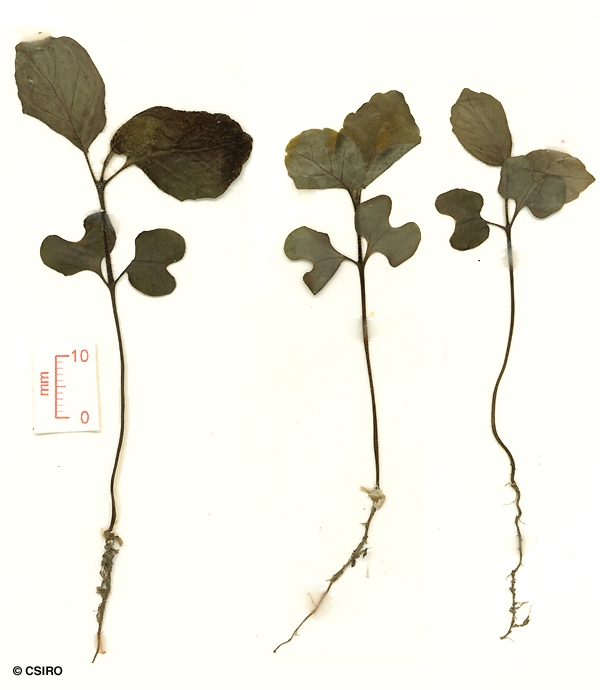Australian Tropical Rainforest Plants - Online edition
Spathodea campanulata P.Beauv.




Palisot de Beauvois, A.M.F.J. (1805) Flora D'Oware et de Benin 1: 47. Type: Tropical Africa.
African Tuliptree; Tulip Tree
Often a multistemmed and poorly formed tree.
Leaf bearing twigs marked by numerous pale coloured lenticels. Compound leaf rhachis shallowly channelled on the upper surface. Two or three pale domed glands on the underside of each leaflet blade towards the base close to the junction with the leaflet stalk. Glands often domed on the upper surface of the leaflet blade. Leaflet blades about 4-11 x 2.5-8 cm.
Flowers large, calyx spathe-like, splitting along one side and becoming falcately curved, about 4-7 cm long and densely brown appressed pubescent on the outer surface but glabrous on the inner surface. Corolla campanulate, about 9-13 cm long, lobes about 2-3 cm long. Anthers with two divaricate or almost separate cells, filaments about 5-7 cm long. Ovary about 6 mm long, style about 70-80 mm long, stigmas two, lanceolate to elliptical.
Cotyledons lobed, about 7-9 x 10-13 mm, apex deeply emarginate, base cordate. At the tenth leaf stage: terminal leaflet much larger than lateral leaflets; lateral leaflets ovate, apex acuminate, base cuneate or obtuse, hairy on the upper surface, hairs pale, almost prostrate; petiole, stem and terminal bud densely clothed in long pale hairs. Seed germination time 11 days.
An introduced species originally from Africa, now naturalised in WA, NT, NEQ, CEQ and south to south-eastern Queensland. Cultivated in CYP and also possibly naturalised. Altitudinal range from sea level to 750 m. Grows in disturbed areas of rain forest particularly on the coastal lowlands. This species probably has the capacity to become a widespread alien as the seeds are light and winged and can be carried long distances even by gentle breezes.
Trees of this species can be quite spectacular when in flower and it is not surprising that it was introduced for its ornamental value. However, trees of this species (like others in the family Bigoniaceae) are brittle and broken stems and branches can be quite a hazard in cyclones.





